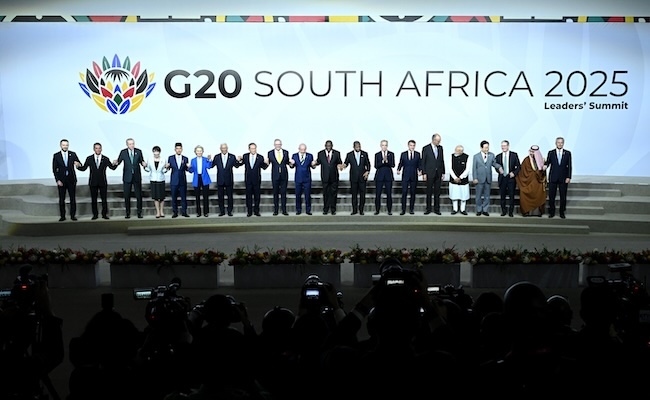In hindsight, it was laughably naive. The idea that the disclosure of remuneration details would encourage corporate executives to exercise some restraint in the pay they awarded themselves.
It assumed these executives, who had fought their way to the top of the corporate ladder, had some sense of social awareness. It completely overlooked the reality that their awareness was directed not at broader society, but at other executives’ pay – particularly those who were getting more. Underpinning this envy, making it more acceptable to a capitalist system, was the pseudo-scientific notion of benchmarking.
So, 23 years of benchmarking later, executives of JSE-listed companies are enjoying levels of pay undreamt of even three decades ago.
In South Africa, remuneration disclosure is a very 21st-century phenomenon. Until the JSE mandated detailed disclosure back in 2002, few people outside the boardroom had any idea what individual top executives were earning. Of course, everyone suspected they were getting paid huge sums, but we didn’t know for sure. The only public declaration required was a brief paragraph in the annual report stating the total remuneration paid to all the directors.
Since 2002, reports detailing how much and on what basis executives are paid have expanded at almost the same pace as remuneration itself. Instead of that delightfully brief paragraph, reports now generally account for 20 to 30 and sometimes as much as 60 of the most dense pages in an annual report.
Perhaps inevitably, the beefier pay requirements have given rise to a thriving industry of consultants and remuneration committee members, whose role in life is to ensure packages become ever more valuable.
These dense reports have also kept journalists and other commentators busy, digging through the details for insight into corporate culture.
It’s a far cry from the 20th century, when the brief paragraph contained in annual reports went largely unnoticed.
Fortunately, they didn’t go entirely unnoticed. It turns out the Labour Research Services (LRS), a Cape-based think tank set up in 1986 with the aim of providing economic and financial research for trade unions, found plenty of material in those pithy passages. The LRS researchers trawled through the annual reports of scores of the top listed companies in search of invaluable data ahead of wage negotiations.
A search through the extremely useful LRS archives gives some indication of how far we’ve come.
Consider this: a director pay survey done by the LRS in 1986 puts Anglo American at the top of a list of the 10 highest-paying companies on the JSE. That year, Anglo’s total directors’ pay bill came to R9m. LRS calculated that the average weekly pay for an Anglo director at that stage was a mere R6,410, which may seem laughingly small but looks a little less derisory when converted to 2024 rands. Then you’re looking at R103,000 a week or R5.3m a year.
But, Martin Nicol who was an LRS researcher at the time, cautions that the average figure does not provide an accurate comparison. For a start, there were an unimaginable 27 directors on the Anglo board back in 1986, most of whom were what we would now call non-executives. (In terms of the law there is no distinction between executive and non-executive directors. The non-executive director role is one that has been beefed up by corporate governance codes over the past two decades.)
In addition, 1986 boards tended to be clubby affairs, with less of the corporate governance pressure associated with the role today. Quite often the company’s banker, main investor or a corporate colleague would have a seat on the board and receive a nominal payment for his efforts. (Yes, in 1986 female directors were almost unheard of.)
Huge sums of money
Allowing for these factors and given the limited information available, Currency reckons it’s reasonable to assume the Anglo chair, which was the top executive position at the time, pocketed about R2.5-R3m of the R9m total payment. In 2024 values that is equivalent to between R40m and R48m.
So, how does that stack up against what Anglo’s CEO received in 2024? Well, not very well as it happens. Though, of course, that depends on your perspective.
The group’s 2024 remuneration report is a relatively tightly written 31-page document and towards the end of it, shareholders are informed that CEO Duncan Wanblad received £4.4m (R104.3m) for his endeavours. This sum, which includes 66% of his short-term bonuses, would have been significantly higher had he picked up more than a rather meagre 24.5% of his long-term incentives.
But it looks almost restrained compared to what then CEO Mark Cutifani was paid back in 2018. The Anglo CEO’s total remuneration that year was a staggering £15.6m (R369.72m), which included 63% of his short-term bonuses and 100% of long-term incentives.
These are huge sums of money by any measure – unless you’re in the AI business or a Tesla shareholder.
It raises the question: is this substantially higher pay in the post-disclosure period warranted? Or has the disclosure process been usurped by the corporate elite?
Anglo’s mining business is now global and its primary listing has been shifted to the higher-paying London Stock Exchange. But its business is surely no less complex than it was in 1986, when it was Southern Africa based and stretched from mining, to manufacturing, to retail, to banking and food. And while its current workforce is an impressive 90,400, that is a fraction of the 720,000 it employed in 1986.
Another extremely telling aspect of the LRS research is the survival rate of the companies on its list of top 10 payers. It is dismally low. In addition to Anglo, there was Trencor, Abercom, Anglovaal, EL Bateman, Barlow Rand, Malbak, Rand Mines, Plate Glass and Beares. Apart from Barlow Rand and, perhaps Trencor, the rest will be unfamiliar to anyone under 55.
So, it seems high pay doesn’t guarantee longevity. It’s hard to know what it does guarantee.
Top image: Rawpixel/Currency collage.
Sign up to Currency’s weekly newsletters to receive your own bulletin of weekday news and weekend treats. Register here.













